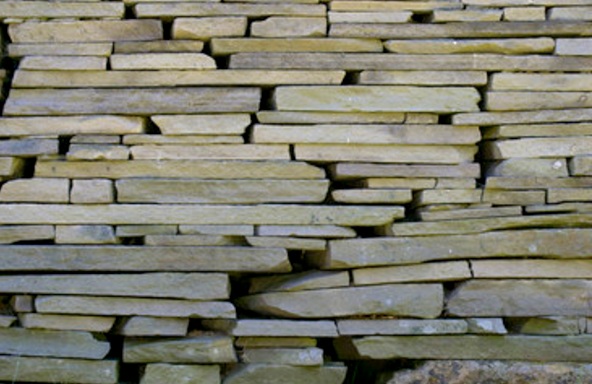Since fieldstone it is generally not cut or honed prior to use in landscaping, fieldstone is not uniform in appearance—the natural stone’s irregular sizes, textures, and shapes make it look as if it were just dug out of the ground. The asymmetry of fieldstone therefore makes it perfect for landscape projects designed to appear as if they were completed with materials that came directly from the surrounding environment. Here are several ideas for using fieldstone in your next Bergen County, NJ, landscaping project.
Building Walls
Fieldstone’s versatility is on display when building walls. Because fieldstone comes in all shapes and sizes (and is usually purchased in pallets of either “flat” fieldstone or “mixed-size” fieldstone), different types of fieldstone lend themselves best to different types of walls.
Larger, heavier pieces of fieldstone can be tightly packed together to create attractive retaining walls that are sturdy and durable. Smaller pieces of fieldstone can be the ideal choice for creating border walls, especially around stand-alone plant beds. No matter the size or purpose of the wall, it can either be topped with flat fieldstone for a streamlined appearance or left uneven on top for a more free-form look.
Related: Building a Boulder Retaining Wall? Visit Our Landscape Supply
When properly installed and compacted, walls made of fieldstone do not require mortar. As a safety precaution, however, if walls are meant to be load-bearing, then it is generally advisable to cement fieldstone into place with mortar. As well, when using fieldstone for walls, you’ll want to dig a minimum of 4–6 inches deep before you begin laying stone to ensure a solid foundation.
Delineating Borders
Fieldstone is also a great option for creating natural stone borders around landscaping features such as a ponds, walkways, and fire pits. These man-made structures will seem like they were always part of the landscape—as if they were constructed years ago during a simpler time. This natural stone is especially useful for borders that wind and curve, as larger stones can be used to form the borders’ rough outline and smaller stones can then be wedged tightly into odd-shaped gaps.
Walkways and Bridges
By finding the right mix of uneven and flat fieldstone and using mortar for stability, you can create walkways and even bridges entirely out of this one type of stone. Consider proposing a stone path that becomes a central focal point of your next landscaping project. It could be accompanied by strategically placed lighting to keep the attention on the beautiful stonework at all hours.
Gardens
Fieldstone could find its rightful place in the garden, by offering a textured contrast among the softscape. The stone can be relied upon to provide a visual break among plantings while helping to transition different planting arrangements. This is similar to the idea of using fieldstone to delineate borders, except that the stones are placed more strategically and sparingly—they become features themselves rather than simply a framing device. Especially suitable for this purpose are larger, more oddly shaped stones that have an interesting appearance but whose asymmetry may make them more of a challenge to incorporate into projects that require more tightly packed stones.


